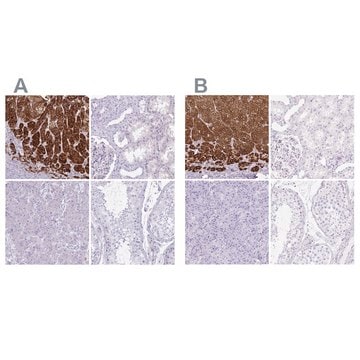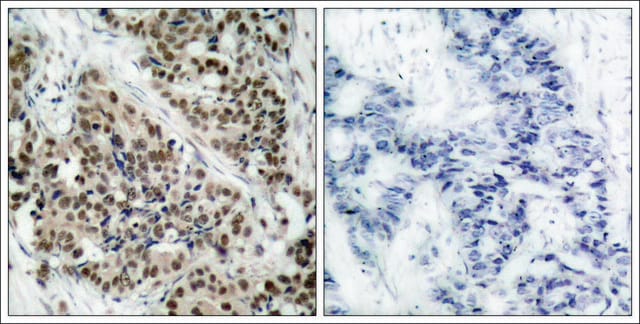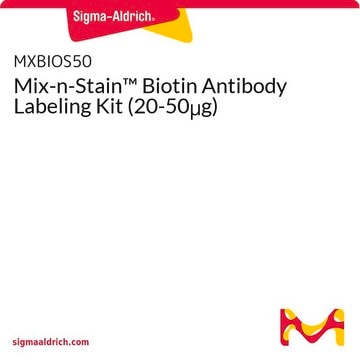ZRB1542
Anti-phospho-p53 (Ser15) Antibody, clone 5L22 ZooMAb® Rabbit Monoclonal

recombinant, expressed in HEK 293 cells
About This Item
Recommended Products
biological source
rabbit
Quality Level
recombinant
expressed in HEK 293 cells
conjugate
unconjugated
antibody form
purified antibody
antibody product type
primary antibodies
clone
5L22, recombinant monoclonal
description
recombinant, expressed in HEK 293 cells
product line
ZooMAb® learn more
form
lyophilized
mol wt
calculated mol wt 43.65 kDa
observed mol wt ~51 kDa
purified by
using Protein A
species reactivity
monkey, human
species reactivity (predicted by homology)
porcine, bovine
packaging
antibody small pack of 25 μL
greener alternative product characteristics
Waste Prevention
Designing Safer Chemicals
Design for Energy Efficiency
Learn more about the Principles of Green Chemistry.
enhanced validation
recombinant expression
Learn more about Antibody Enhanced Validation
sustainability
Greener Alternative Product
technique(s)
affinity binding assay: suitable
immunocytochemistry: suitable
immunohistochemistry (formalin-fixed, paraffin-embedded sections): suitable
western blot: suitable
isotype
IgG
epitope sequence
Unknown
Protein ID accession no.
UniProt accession no.
greener alternative category
, Aligned
shipped in
ambient
storage temp.
2-8°C
target post-translational modification
phosphorylation (pSer15)
General description
Specificity
Immunogen
Application
Evaluated by Western blotting with recombinant fragment of human p53 surrounding phosphoserine 15.
Western Blotting Analysis (WB): A 1:1,000 dilution of this antibody detected recombinant human p53 fragment phosphorylated on serine 15 but did not react with non-phosphorylated construct (p53 construct: Courtesy of Dr. Jesse Rinehart, Yale University, School of Medicine).
Tested applications
Western Blotting Analysis: A 1:1,000 dilution from a representative lot detected phospho-p53 (Ser15) in lysate from Cos-1 cells treated with UV light.
Flow Cytometry Analysis: 0.1 μg from a representative lot detected phospho-p53 (Ser15) in one million A549 cells treated with UV light
Affinity Binding Assay: A representative lot of this antibody bound phospho-p53 (Ser15) with a KD value of 9.7 x 10-8 in an affinity binding assay.
Immunohistochemistry (Paraffin) Analysis: A 1:100 dilution from a representative lot detected phospho-p53 (Ser15) in human breast cancer and human colon cancer tissue sections.
Immunocytochemistry Analysis: A 1:100 dilution from a representative lot detected phospho-p53 (Ser15) in Cos-1 cells treated with UV light..
Peptide Inhibition Assay: Target band detection in lysate from Cos-1 cells treated with UV light was prevented by pre-blocking of a representative lot with the p53 phospho-peptide (Ser15), but not the corresponding nonphosphopeptide.
Note: Actual optimal working dilutions must be determined by end user as specimens, and experimental conditions may vary with the end user
Target description
Physical form
Reconstitution
Storage and Stability
Legal Information
Disclaimer
Not finding the right product?
Try our Product Selector Tool.
Storage Class Code
11 - Combustible Solids
WGK
WGK 1
Flash Point(F)
Not applicable
Flash Point(C)
Not applicable
Certificates of Analysis (COA)
Search for Certificates of Analysis (COA) by entering the products Lot/Batch Number. Lot and Batch Numbers can be found on a product’s label following the words ‘Lot’ or ‘Batch’.
Already Own This Product?
Find documentation for the products that you have recently purchased in the Document Library.
Articles
Learn about the hallmarks of cancer and find reliable ZooMAb® recombinant antibodies to study them, conveniently organized by cancer hallmark.
Our team of scientists has experience in all areas of research including Life Science, Material Science, Chemical Synthesis, Chromatography, Analytical and many others.
Contact Technical Service




